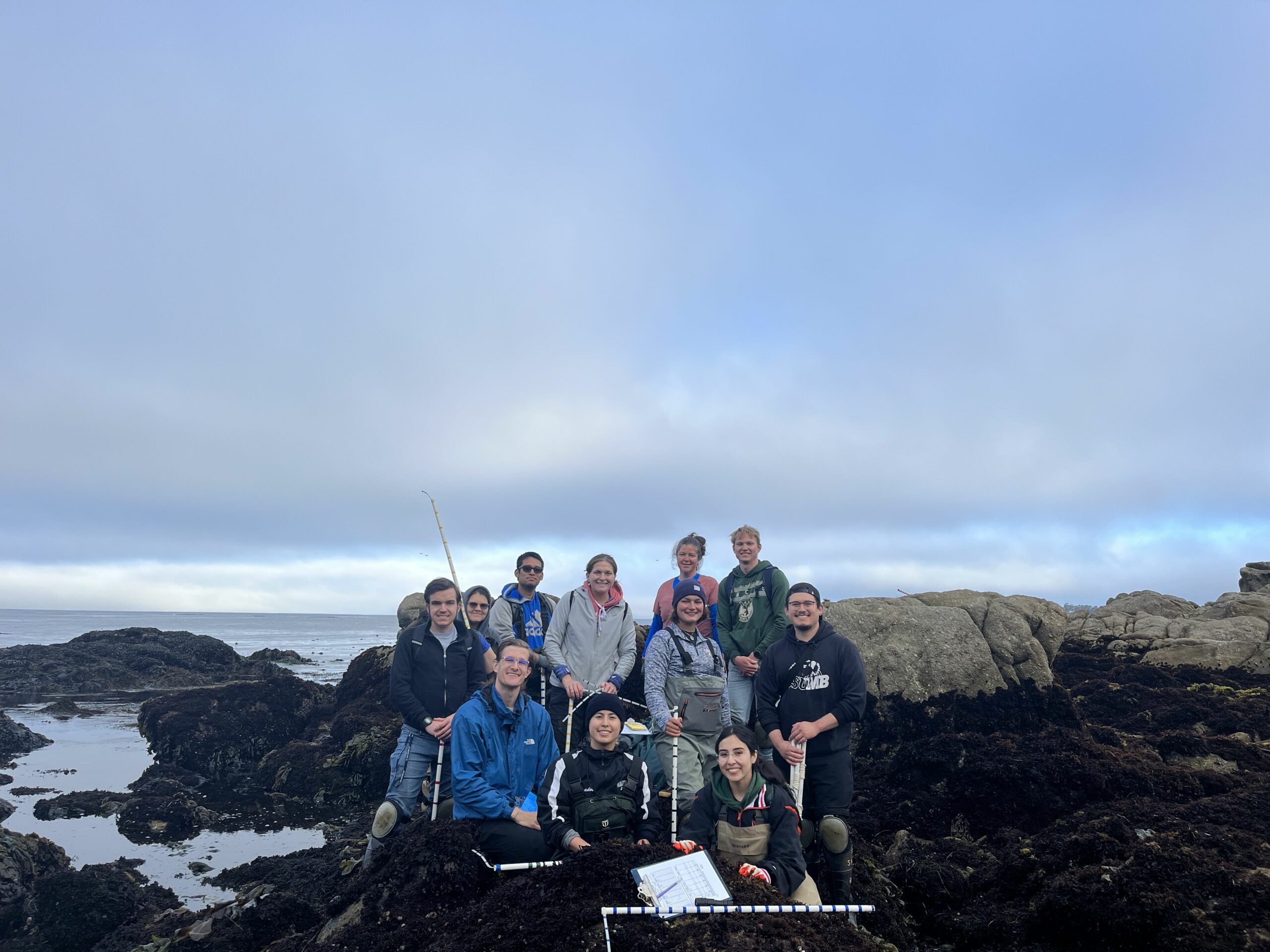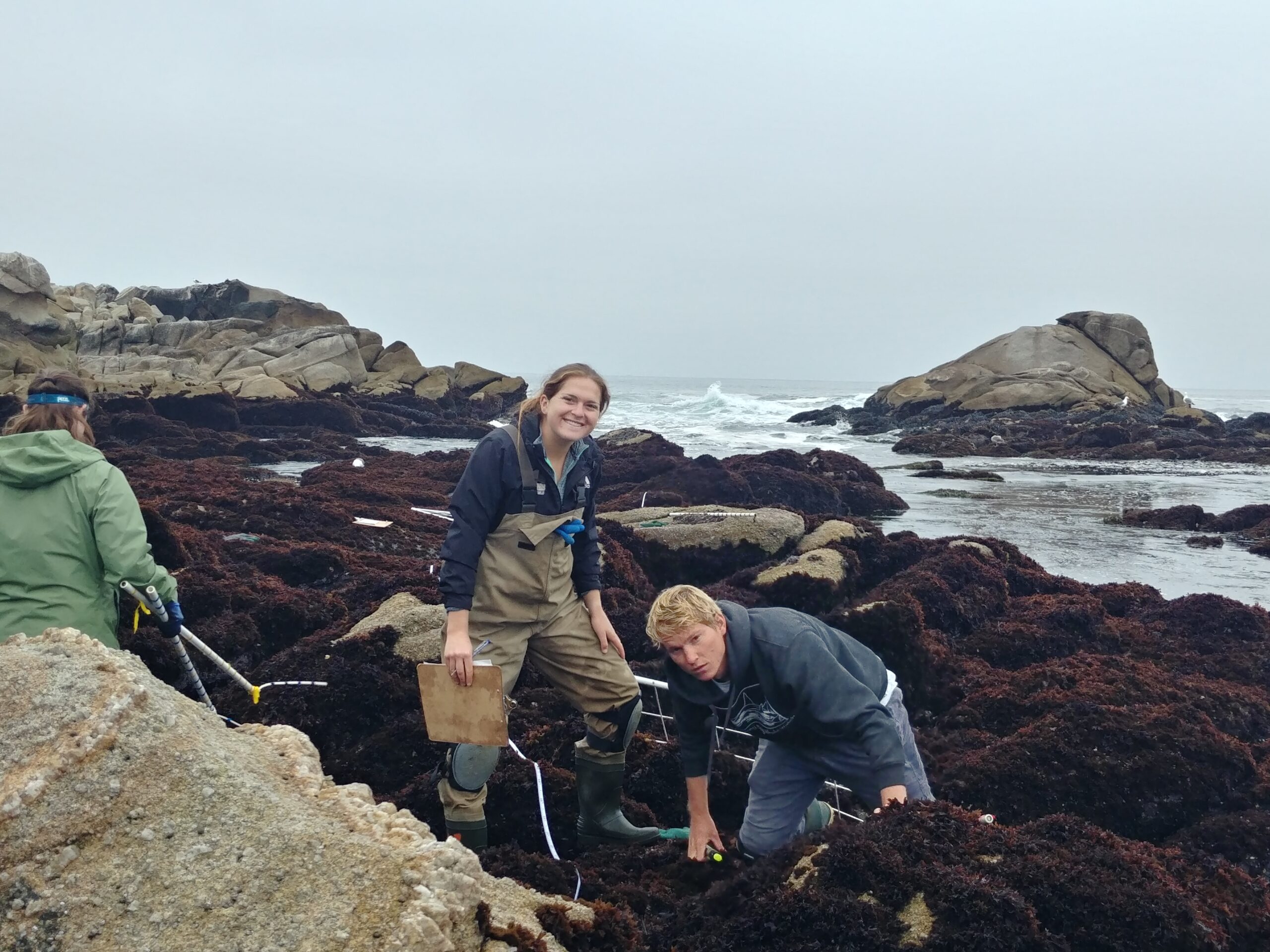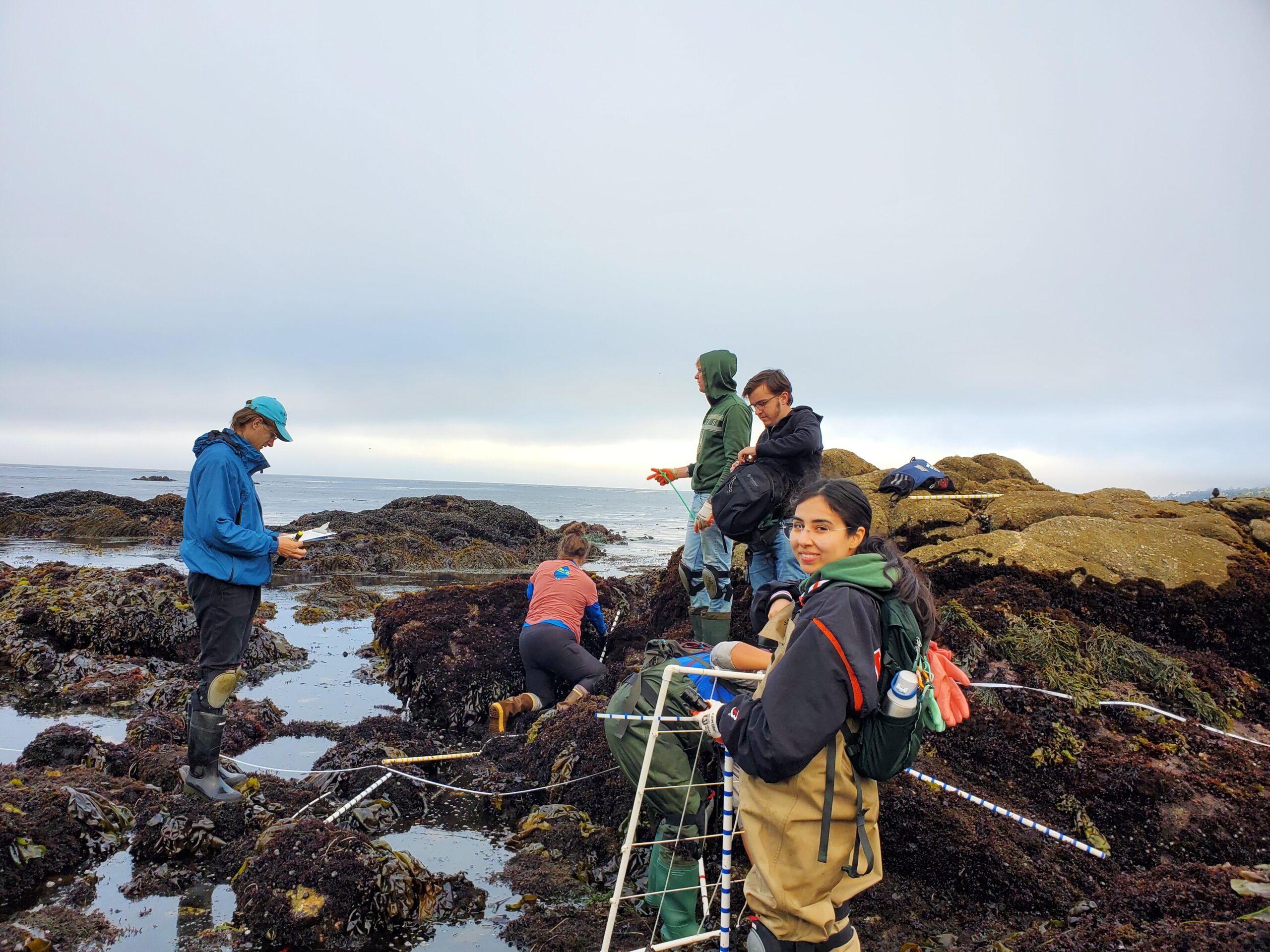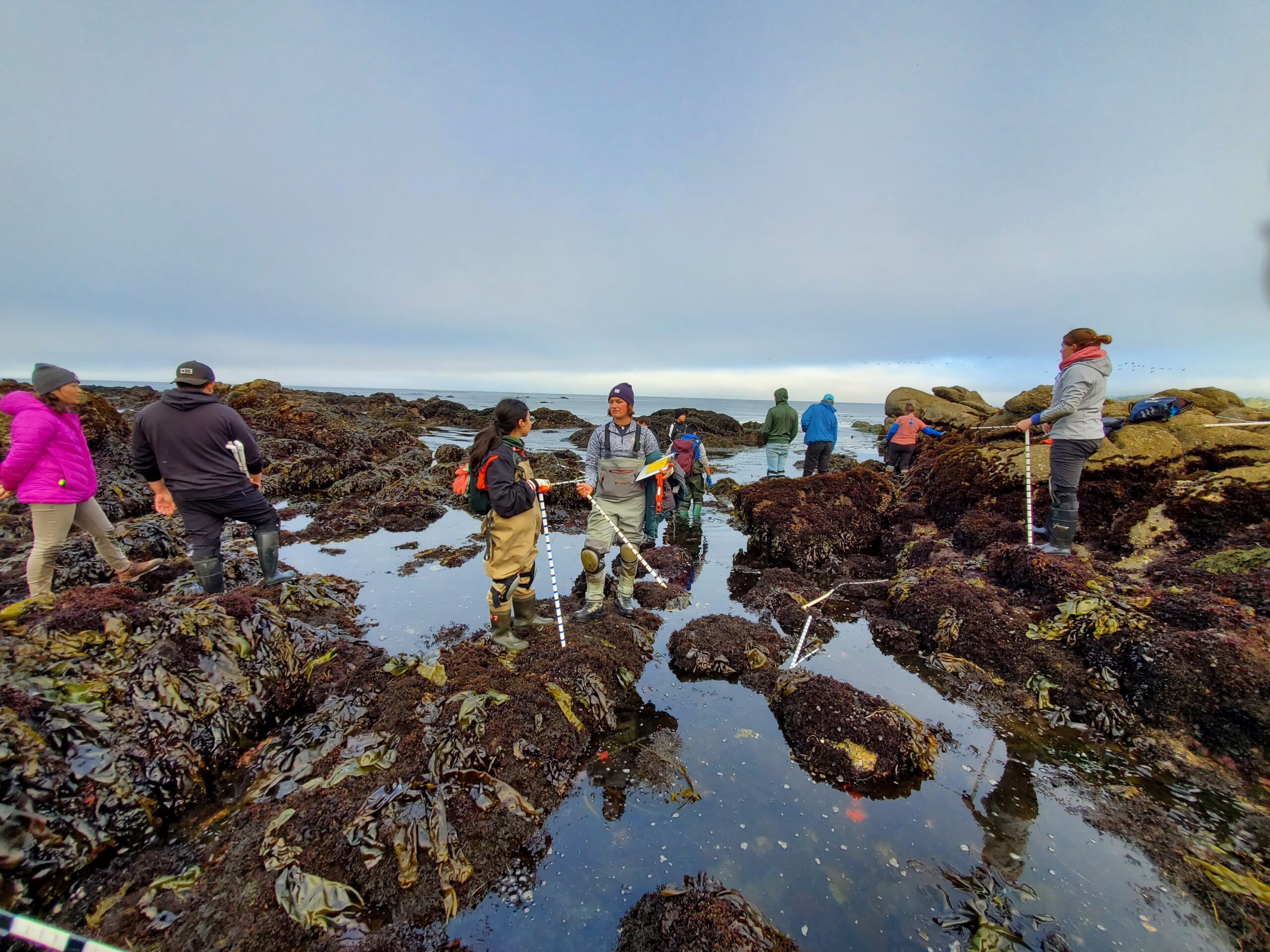"Drivers of intertidal purple sea urchin (Strongylocentrotus purpuratus) reproductive capacity and the implications for kelp forest recovery"
A Thesis Defense by Isaak Haberman
| Live-Stream | December 8th, 2023 at 3:00 pm PDT
Abstract
Kelp forests are integrally important ecosystems along eastern Pacific coastlines, sequestering carbon, reducing wave erosion, and increasing biodiversity in coastal marine communities. However, kelp forest coverage in central California has experienced major decline in the past decade, being replaced with unproductive urchin barren habitats. The factors affecting the establishment and persistence of urchin barrens have been extensively researched in the subtidal, but the influence of intertidal sea urchin populations is unknown. Moreover, intertidal populations are likely connected to subtidal communities via larval dispersal, so an understanding of intertidal urchin reproductive dynamics is important. I collected urchins and biological and environmental data from nine sites along the Monterey Peninsula in central California with varying algal communities, urchin densities, and wave exposures. I weighed and extracted the gonads from urchins at each site to measure gonadal somatic index (GSI%), a representation of reproductive capacity proportional to urchin size. I found that intertidal urchin reproductive capacity is unrelated to coralline algae cover or urchin density; contrary to what is seen in the subtidal. There is a weak positive relationship between fleshy algae coverage and reproductive capacity. Moreover, urchins collected from sites that had higher drift algae presence exhibited higher reproductive capacities. This indicates that urchins in the intertidal are resilient to poor fleshy algae coverage where they are living because drift algae is continually deposited into intertidal environments for them to consume. Therefore, the intertidal can support higher densities of healthy sea urchins that may represent an important contribution of urchin larval supply to subtidal urchin barrens. Kelp restoration efforts must be amended to include intertidal areas - especially those of high urchin densities - in order to maximize their efficacy.
Bio
I am a graduate student at CSUMB and MLML advised by Alison Haupt and co-advised by Amanda Kahn. I completed my undergraduate degree at the University of British Columbia where I studied marine biology and did research on the caloric value of different seaweed species. My thesis at CSUMB focuses on the reproductive capacities of intertidal populations of purple sea urchins (Strongylocentrotus purpuratus) and how these populations are important to consider for kelp forest restoration techniques. My research interests are nearshore community ecology, applied ecology, and generally how species interactions and habitat shape the species composition of different nearshore areas. After I graduate, I will be teaching at CSUMB in the spring. In my spare time I like doing crossword puzzles, going camping and climbing, and watching the Packers.






